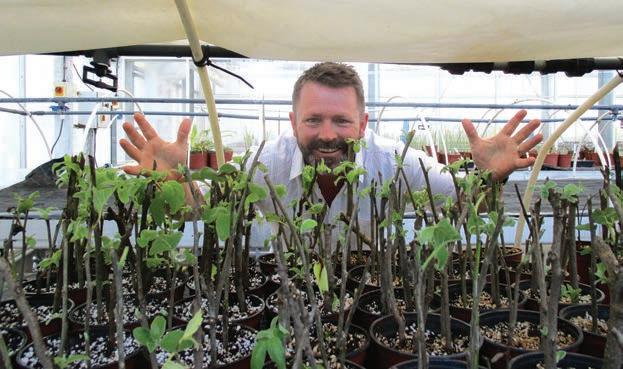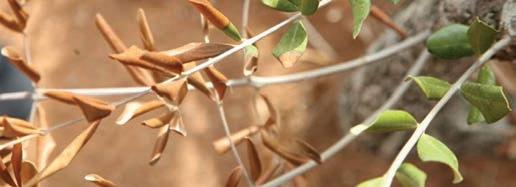Xylella
06 / NURSERY
Dónall Flanagan, Teagasc nursery stock and ornamentals advisor details a worldwide threat to plant health which has been identified in Europe and risks spreading if serious action is not taken
T
he worrying disease Xylella fastidiosa (Xf) has been in Europe for more than five years. It has been causing problems in the Americas for many years, and has been on the watch list for plant health officers for a long time. Coffee and olive plants coming to Europe have been closely inspected for Xf since becoming a notifiable disease in 2000. Without decisive action, Ireland faces its most serious plant disease threat yet.
and sycamore. This is significant because there is a very active trade in ornamental plants all across Europe. In Ireland we are familiar with many plants sourced from Italy and France (e.g. lavender, rosemary, and the Celtic Tiger trophy plant, olive). Other countries like these plants too and there is a steady movement of them from market to market across Europe. Xylella is only a truck journey away from any country in Europe.
UNDERSTANDING XF
EU and private companies are taking action. Since the first detection of the disease, the EU has had a strict eradication policy which starts with identification and the establishment of an eradication zone. Once established, all host plants and vectors within 100m of the diseased plant are destroyed. A buffer zone of at least 5km in width surrounding the infected zone is set for five years, where movement of host plants is strictly controlled. Under certain conditions, which would guarantee that no further spread of Xf has occurred, the buffer zone may be reduced to a width of at least 1km around the infected site and be maintained for at least one year. Increased control measures were agreed by the EU at the end of October this year. DAFM played an important role in securing these stronger controls to protect our environment and our trade. Annual testing, likely to begin in March 2018, will now be required for the
Xf is a bacterial infection and causes wilting and death of plants. It enters the water-conducting xylem vessels where it multiplies and blocks the transportation of water. As spittle bugs feed on the fluid from the plant xylem they can become infected by the bacteria and pass it on to other plants. The three different subspecies of Xylella present in Europe are fastidiosa, pauca and multiplex. The bacteria are very specific in their hosts and may not infect closely related plant species or even some varieties. The bacteria is a major concern for a few reasons. It is likely to be fatal to its host. It has a very wide host range of 60+ plant species that show symptoms and more than 240 that can carry the disease without symptoms. Its vectors, spittle bugs, can be found all across Europe so it can easily be spread. Most worrying is the fact there is no cure. The disease is currently in a number of confined areas in southern Italy, Spain, France and Corsica and on one site in Germany. The three different species of Xylella have different host ranges and favourable conditions. Xf has the potential to survive in a wide range of climates in Europe including Ireland. Xylella fastidiosa sp. multiplex has the widest range of hosts and survives in cooler climates. Some of the species attacked by multiplex include oak, elm, ash
CURRENT ACTIONS
What are you doing to stop the disease coming in to your nursery and consequently infecting mine? Graham Spencer
Winter 2017 / www.horticulture.ie / HORTICULTURECONNECTED
19
















